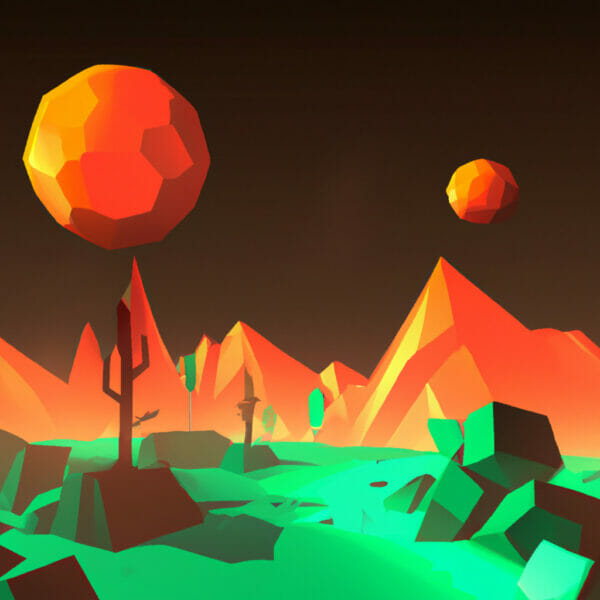Welcome, fellow game enthusiasts and aspiring developers! Today, we dive headfirst into the captivating world of Roblox model scripting. Unleashing your creativity in the Roblox universe becomes infinitely easier once you master the art of scripting. Whether you’re a seasoned game programmer looking to branch out or an absolute beginner trying to find your footing, this all-inclusive tutorial has something in store for you.
Table of contents
What Exactly is Roblox Model Scripting?
Roblox model scripting is all about leveraging the power of the Lua programming language to breathe life into the 3D models in your Roblox games. It serves as the critical link that converts static 3D models into dynamic, interactive elements of your Roblox world.
Why Spend Time Learning this Skill?
Scripting in Roblox transcends the creation of immersive gameplay: it allows developers to manifest what their imagination can conceiv. Learning this skill opens the doorway to new potential.
Moreover, as the gaming industry continues to push boundaries, mastering scripting languages like Lua is becoming increasingly relevant for budding game developers. So, apart from equipping you with the magic wand to transform your Roblox experience, this learning journey also enhances your skill set as a game developer.
Now that we’ve addressed the “what” and “why” let’s move onto the good stuff – the “how”!
Getting Started with Roblox Model Scripting
Before we dive into the Lua coding examples, you need to understand some basic concepts. Firstly, scripts in Roblox are written in a script file – essentially a text file with a .lua extension. Secondly, these scripts are added to parts or models that you desire to manipulate. Now, let’s get hands-on with some Lua script examples that can be applied to models in Roblox.
1. Changing a Model’s Transparency
This is a simple scripting task you can apply to any model. It showcases how easy it is to influence material aspects with scripts.
local YourModel = game.Workspace.YourModel YourModel.Transparency = 0.5
This script assigns a transparency value of 0.5, making the model semi-transparent. Always remember to replace ‘YourModel’ with your model’s name in the Workspace.
2. Modifying a Model’s Color
Models can be any color on the RGB scale. By creating a script like the one shown below, you can easily modify the color property of your model in Roblox.
local YourModel = game.Workspace.YourModel
YourModel.BrickColor = BrickColor.new("Bright red")This script changes the color of ‘YourModel’ to bright red. Replace ‘Bright red’ with your desired color, and ‘YourModel’ with your model’s name in the Workspace.
3. Creating and Deleting Models
By using basic Lua scripting, you can create and delete models in your Roblox world dynamically. Here’s how:
-- Create a new model
local NewModel = Instance.new("Model")
NewModel.Parent = game.WorkspaceExecuting this script will create a new model in your Roblox Workspace. Notice the use of the Instance.new function to achieve this.
-- Delete an existing model local YourModel = game.Workspace.YourModel YourModel:Remove()
If you want to remove a model, this script will do the work. It uses the :Remove() function to delete ‘YourModel’ from the workspace.
4. Moving Models
Animating models to move across your game world is another typical use case of Roblox scripting. Let’s see an example:
local YourModel = game.Workspace.YourModel YourModel.Position = YourModel.Position + Vector3.new(10, 0, 0)
This script will move ‘YourModel’ 10 units along the X-axis. Replace ‘YourModel’ with your model’s name in the Workspace, and feel free to modify the Vector3 values to customize the direction and distance of movement.
These were just a few basic examples showcasing how Roblox model scripting works. In the next part of the tutorial, we will ramp up the complexity and introduce some advanced scripting concepts.
Working with Advanced Scripting Concepts
Moving onto more complex tasks, let’s examine how to manipulate models using advanced scripting concepts.
1. Using Loops
Looping structures are powerful tools in programming, allowing you to run a block of code multiple times. Here’s an example of using a ‘for’ loop to animate a model.
local YourModel = game.Workspace.YourModel
for i = 1, 10 do
YourModel.Position = YourModel.Position + Vector3.new(10, 0, 0)
wait(1) -- Wait for 1 second
endThis script gradually moves ‘YourModel’ 10 units along the X-axis, pausing for 1 second after each move. The process repeats ten times, creating the illusion of animation.
2. Using Conditional Statements
We use conditionals to make decisions in our scripts. Let’s create an illusion of a day-night cycle in your Roblox game using an ‘if’ conditional statement.
local <a class="wpil_keyword_link" href="https://gamedevacademy.org/best-unity-lighting-tutorials/" target="_blank" rel="noopener" title="Lighting" data-wpil-keyword-link="linked">Lighting</a> = game:GetService("Lighting")
if Lighting.ClockTime < 12 then
Lighting.TimeOfDay = "12:00:00"
else
Lighting.TimeOfDay = "0:00:00"
endThis script changes the lighting of the game based on the in-game time. If it’s daytime (ClockTime is less than 12), then it sets the TimeOfDay property to 12, simulating daylight. If it’s not daytime, it sets the TimeOfDay to 0, simulating night.
3. Creating Model Clones
Cloning is a handy feature in scripting that allows you to create an exact copy of an object. If you have a model that you want to duplicate in your game, here’s a script for that:
local YourModel = game.Workspace.YourModel local ModelClone = YourModel:Clone() ModelClone.Parent = game.Workspace
This simple script makes a clone of ‘YourModel’ and places the copy also in the Workspace.
4. Using Event-Driven Scripts
Event-driven scripting responds to actions within your game world. Here’s a script that triggers a model’s movement when a user clicks on it:
local YourModel = game.Workspace.YourModel
YourModel.MouseClick:Connect(function()
YourModel.Position = YourModel.Position + Vector3.new(10, 0, 0)
end)In this script, we are connecting the model’s MouseClick event to a function that moves the model.
5. Making Models React to Physics
Roblox physics engine also can be manipulated by scripts. Here’s an example of how to make your model react as if falling due to gravity:
local YourModel = game.Workspace.YourModel YourModel.Velocity = Vector3.new(0, -9.8, 0)
This script simulates gravity by applying a velocity of -9.8 (mimicking Earth’s gravity) to ‘YourModel’ on the y-axis.
Remember, while scripting goes a long way in defining the experience of your Roblox game, understanding game design principles and aesthetic design can supplement and enhance the overall quality of your game. Happy coding!
Exploring Interactions Between Multiple Models
In order to create a fun, captivating experience for gamers, it’s crucial to understand the interactions of multiple models. Let’s venture further into Roblox scripting with several practical examples.
1. Creating Model Groups
Grouping models together can simplify your scripting code. Grouping models allows you to manipulate them as a unit and access them through a common identifier. Here’s how to group your models together:
local Model1 = game.Workspace.Model1
local Model2 = game.Workspace.Model2
local GroupModel = Instance.new("Model", game.Workspace)
Model1.Parent = GroupModel
Model2.Parent = GroupModelThis code creates a new model in the game Workspace, then turns both Model1 and Model2 into children of that group model. This means we can now treat them as a unit for scripting purposes.
Manipulating Model Groups
Now that our models are grouped together, we can control them as a single unit. This simplifies managing large numbers of models. See how we manipulate model groups:
local GroupModel = game.Workspace.GroupModel
for _, Model in pairs(GroupModel:GetChildren()) do
Model.Position = Model.Position + Vector3.new(10, 0, 0)
endThis script moves every model in the group 10 units along the X-axis. We use the _:GetChildren()_ function to loop through each child model in the group.
2. Working with Nested Models
Models can be nested within other models, creating a hierarchy. This can be useful for organizing your game and writing more efficient scripts. Let’s take a look:
local ParentModel = game.Workspace.ParentModel local ChildModel = ParentModel.ChildModel ChildModel.Position = ChildModel.Position + Vector3.new(10, 0, 0)
This script accesses a model nested within another model and moves the nested model. When writing your own scripts, replace ‘ParentModel’ and ‘ChildModel’ with your model names.
3. Collision Detection for Models
Collision detection is a common concept in game development. In Roblox, we can script models to react when they collide with other models. Here’s an example:
function OnCollision(part)
local Model = part.Parent
if Model then
Model.BrickColor = BrickColor.new("Bright red")
end
end
local YourModel = game.Workspace.YourModel
YourModel.Touched:Connect(OnCollision)This script changes the color of any model to bright red when it collides with ‘YourModel’. We’re using the ‘Touched’ event of ‘YourModel’ to detect collisions, and the OnCollision function to change colors.
4. Inter-model Communication
Models can interact and communicate with one another through scripts. Let’s look at an example of one model triggering an event in another:
function OnClick()
local OtherModel = game.Workspace.OtherModel
OtherModel.BrickColor = BrickColor.new("Bright red")
end
local YourModel = game.Workspace.YourModel
YourModel.MouseClick:Connect(OnClick)In this script, whenever ‘YourModel’ is clicked, it changes the color of ‘OtherModel’. We use the ‘MouseClick’ event to detect clicks, and the OnClick function to interact with ‘OtherModel’.
5. Utilizing Model-based Timers
A timer can act on an individual model, allowing the implementation of timed events. Here’s an example:
function OnTimer()
local YourModel = game.Workspace.YourModel
YourModel.Transparency = 0.5
end
wait(5) -- Wait for 5 seconds
OnTimer()In this script, ‘YourModel’ turns semi-transparent after a wait of 5 seconds. The ‘wait()’ function creates the delay before executing the transparency change in the OnTimer function.
Scripting deals with the model’s internal movements and interactions but keep in mind to test your game frequently to ensure a smooth gaming experience. Happy scripting, and don’t hesitate to experiment when creating your games!
Where to go Next?
You’ve already taken huge strides in your Roblox development journey, and now it’s time to ramp up your efforts. There’s a fascinating world of game design, AI programming and more, waiting to be utilised in your Roblox creations. But, where can you learn these advanced skills? That’s where we at Zenva come in!
Our Roblox Game Development Mini-Degree is an extensive collection of courses that will take you from being a beginner to a proficient Roblox game developer. This course familiarises you with Roblox Studio and Lua with a host of topics. Be it basics, scripting, melee combat games, or even first-person shooter ones, it’s covered. This flexible and accessible 24/7 course will help you develop key game development skills. What’s more? Courses are taught by instructors who are certified by our trusted partners.
If you want to further broaden your Roblox development skills, check out our complete catalog of Roblox courses. Remember, at Zenva we take you from beginner to professional while creating games, and assist you in earning certificates to boost your career!
Conclusion
Understanding Roblox model scripting is the first step toward creating remarkable games and experiences in the Roblox universe. The versatility of Lua scripting allows you to infuse imagination into your Roblox creations, shaping memorable experiences for millions of players worldwide.
Whether you’re a seasoned developer looking to explore new horizons or a hobbyist seeking to bring your digital ideas to life, we invite you to join us at Zenva. Our comprehensive and accessible courses are designed to equip you with the practical skills you need to transform your digital visions into reality. Now, it’s your turn to leave a mark in the realm of interactive gaming!
Did you come across any errors in this tutorial? Please let us know by completing this form and we’ll look into it!

FINAL DAYS: Unlock coding courses in Unity, Godot, Unreal, Python and more.







